Yes! You Can Grow Early Vegetables Outdoors
It's cold at night but I keep on sowing anyway. Do you want to grow early vegetables outdoors too? Get my best tips about how it's done below!
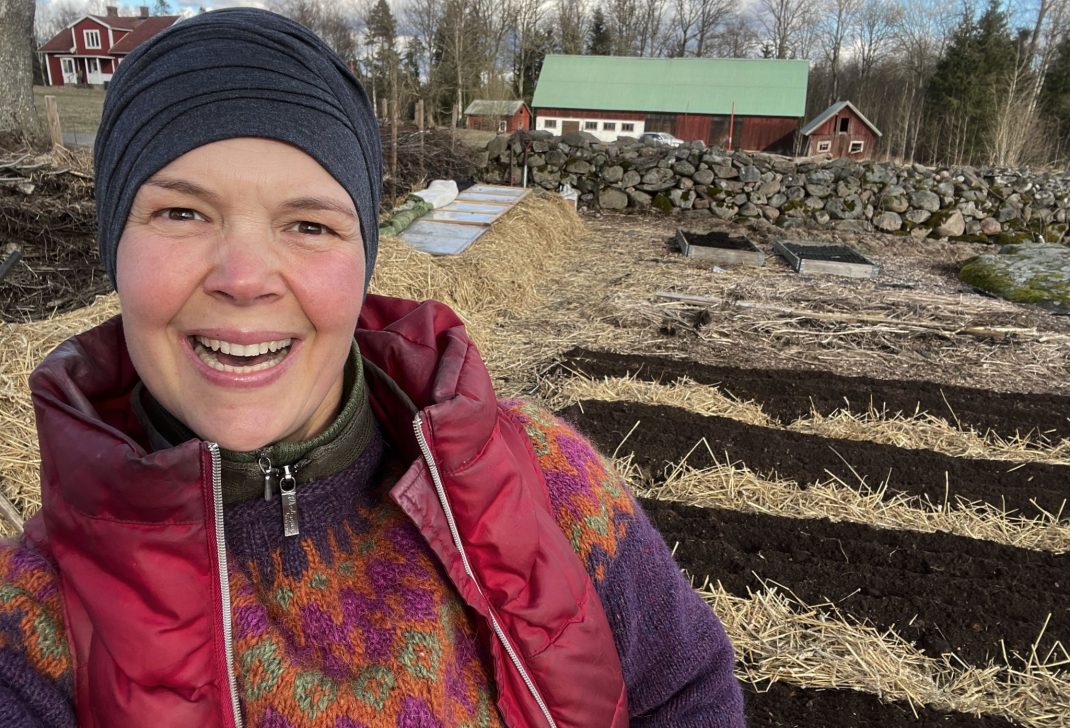
I'm happy about the sun! Can't wait to start grow early vegetables outdoors again.
I finally got to creating new beds in an area that I've been using for other things these past few years. It was surprisingly easy to make four narrow and slightly raised beds in this spot. With great soil that I can sow or plant in. The short sides are facing north/south and the beds are around 2 ft (60 cm) wide. Learn more about how I created these beds below:
Read more: My new raised bed garden
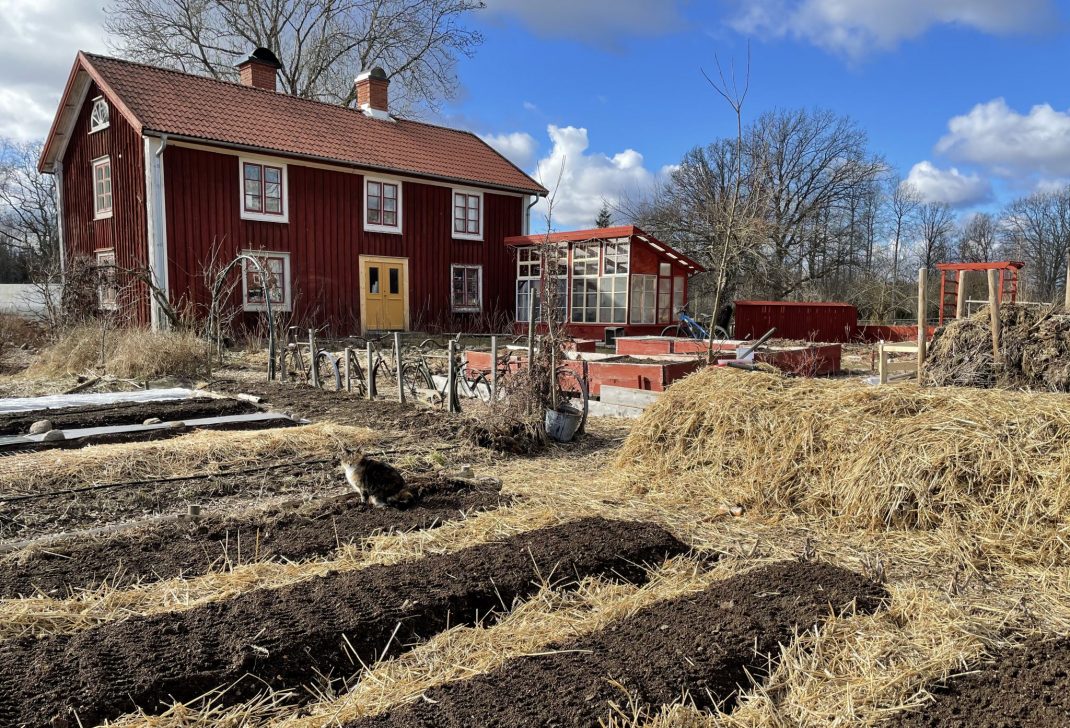
The four new beds in the kitchen garden with plenty of lovely soil on top. I'm ready to grow early vegetables!
One of the most important things I've learnt these past 10 years is how crucial the early vegetables really are. Plenty of books about gardening say that we should wait until the soil reaches a certain temperature or can be processed somehow. I rarely listen to this advice. I want to start as early as I can, simply because I want to harvest as early as possible too! Not everything at once though. But a little bit of many different varieties and vegetables. Then I just repeat these sowings over and over again so that I always have fresh and crispy greens available.
Do you want to create a sowing plan for your spring projects too? I sow my seeds in long rows. Three rows in each bed. The rows are spaced around 6 inches (15 cm) apart. Bed 1 faces the pathway and the rest of the kitchen garden while bed 4 faces the stone wall.
Bed 1
Norli snow pea - fast and low-growing variety, perfect for the children
arugula
Burro Gigante radish - a huge and mild radish
Bed 2
3 x spring carrots of different varieties
Bed 3
3 x cornflower in different colors (deep burgundy, blue and light red)
(I'm sowing 3 x carrots that I can harvest in fall after the cornflowers wither)
Bed 4
black salsify
Bouquet dill - beautiful low-growing variety that you can freeze
Read more: What is black salsify and how do I use it?
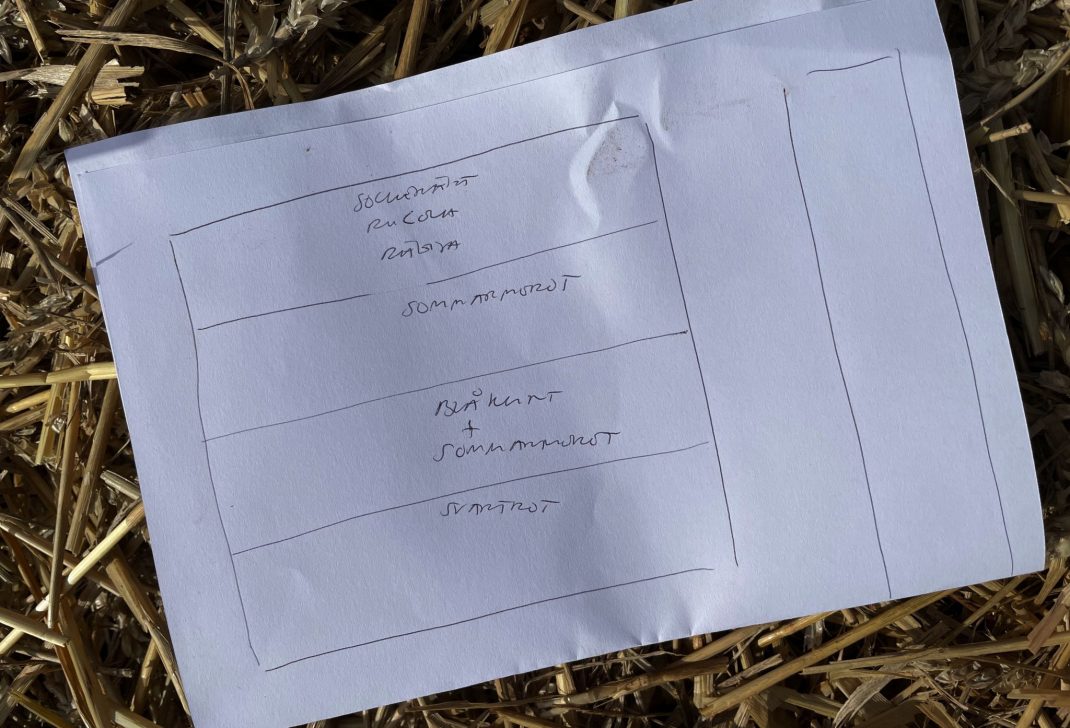
I don't do rigorous planning here in the kitchen garden. Mostly just simple notes like these. This is how I decide what to put where when I'm growing early vegetables outside.
Cold-hardy Varieties
All the varieties above have cold-hardy seeds that do just fine in cold soil. I wouldn't sow for example cucumbers, beans, snap peas or chard this early in the year. I'm very picky! I live in zone 3 and we still have frosty nights. This doesn't seem to bother the seeds at all! They rest in the ground until the soil gets warmer, which is when they germinate. I don't really water the seeds right now. I'm letting nature take care of it with rain. Very convenient!
If you try growing early vegetables outdoors too, then you can always add some row cover on top of the beds. This helps warm the soil and leads to faster germination.
Sow Your Early Vegetables in Rows
A great tip for beginners in the garden is to sow your vegetables in rows. Either horizontal or vertical along the beds or growing frame. The good thing about growing in rows is that it's easy to follow the development of the seedlings as they grow. Weeding is a lot more convenient too! Everything that doesn't grow in the row (so many of the small seedlings look just about the same) can be removed.
Read more: Beginner's guide to growing your own food
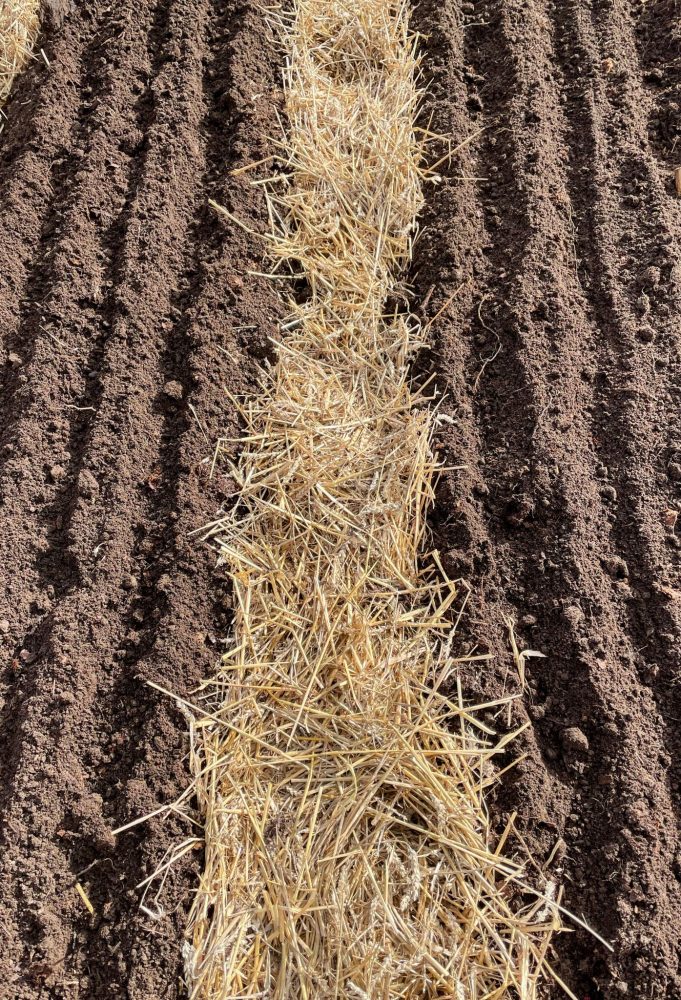
The beds are narrow and I created a little straw pathway to separate them. The perfect spot to grow early vegetables!
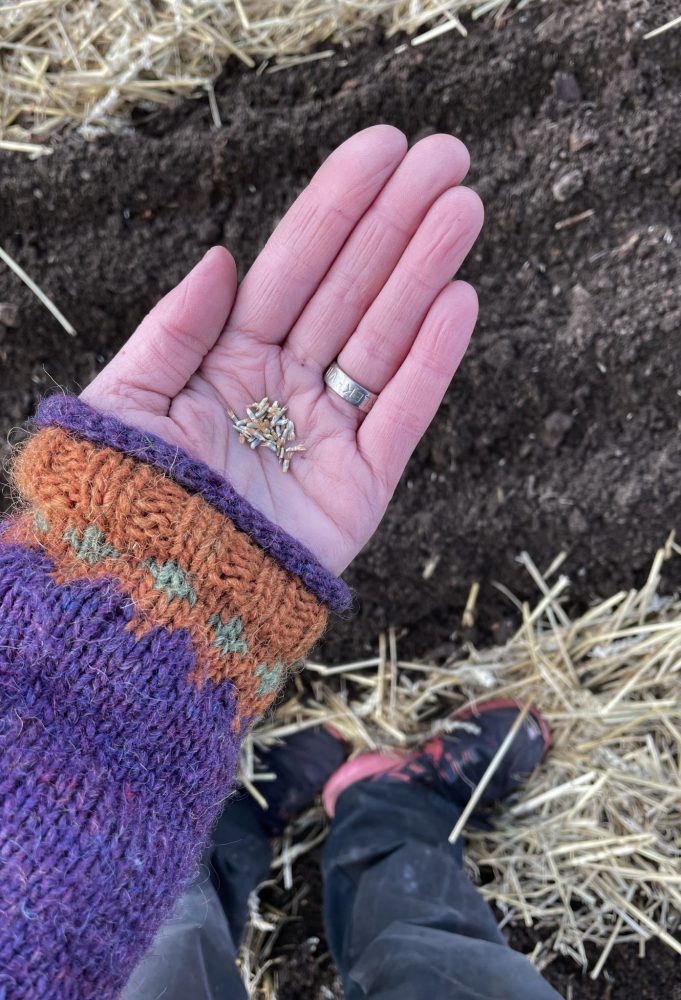
This is what cornflower seeds look like. So small that they easily blow away in the wind. I pick them up with my index finger and thumb and just scatter them sparsely in the row.
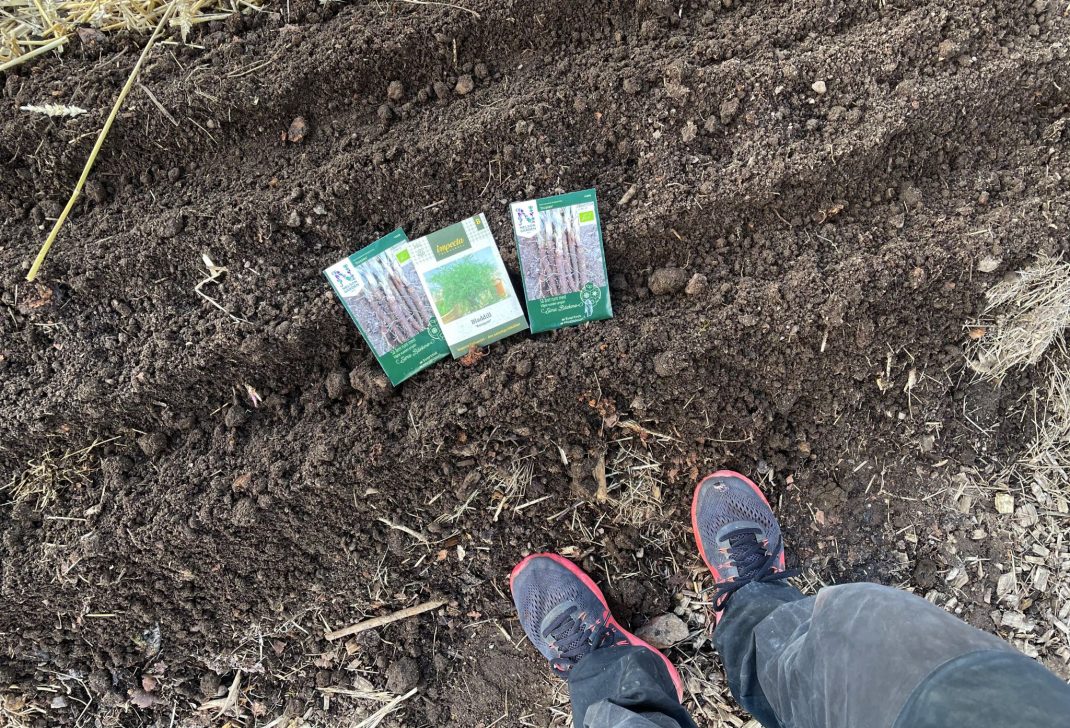
Some of these early vegetables are done sooner than others. For example dill, that I can harvest a lot sooner than the black salsify. I'm planning on cutting the dill in May-June for my freezer. I have to wait for the black salsify until fall or next spring. They get more space when the dill is gone too.
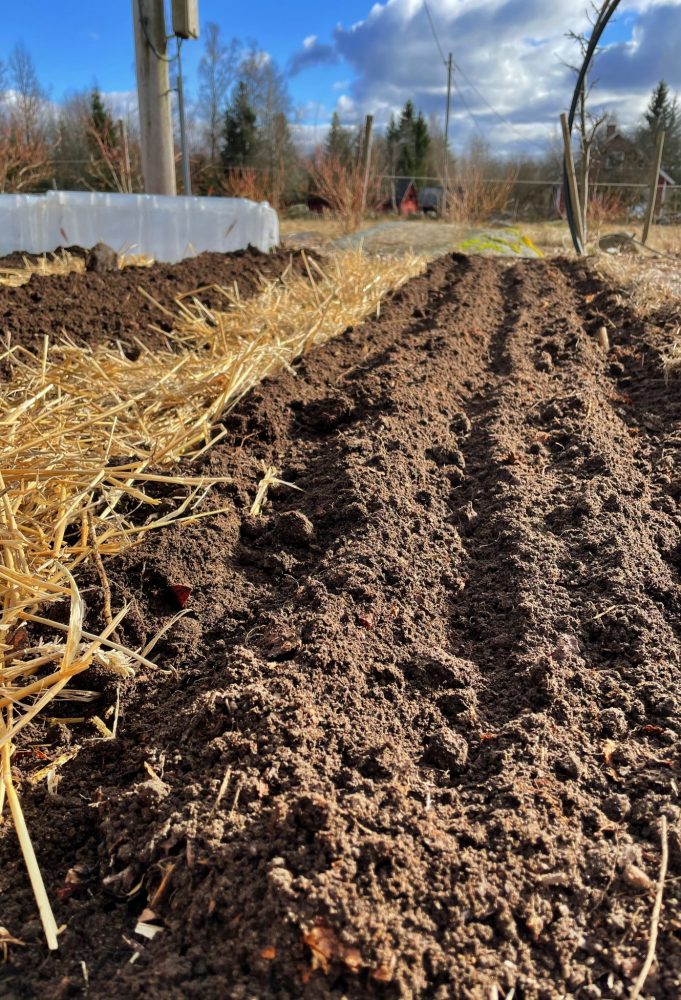
I made three rows in each bed.
More: Forcing rhubarb for an early harvest
Other Varieties
These are just a few of the options of early vegetables outdoors. Here are my other favorites:
- parsley
- lettuce
- parsnip
- bok choy
- orache
- scallions
- spinach
If the soil in your garden thawed enough to rake then it's time to get out there and sow! It doesn't matter if the seeds freeze, thaw or go through a sudden cold spell. They are programmed to germinate when the conditions are just right.
/Sara Bäckmo
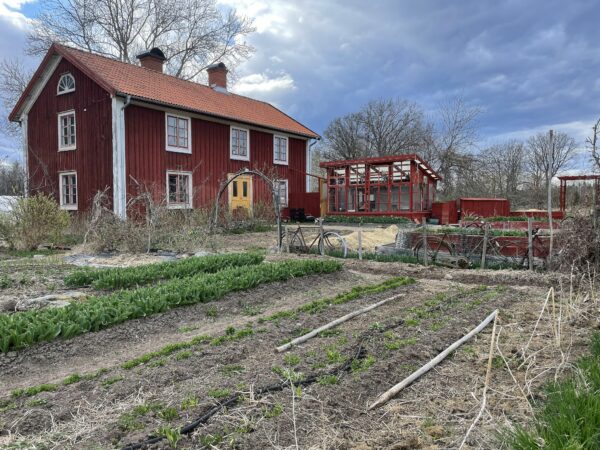
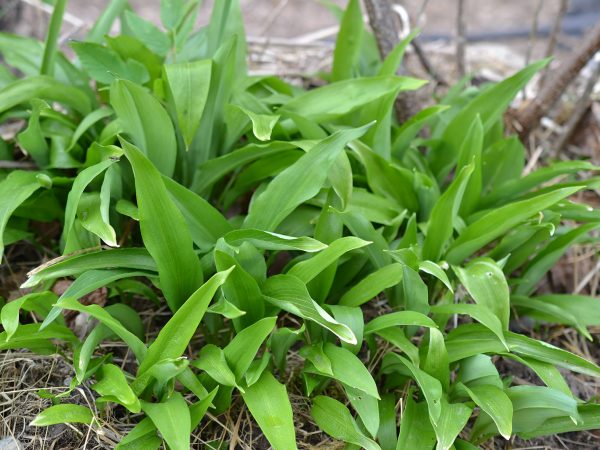
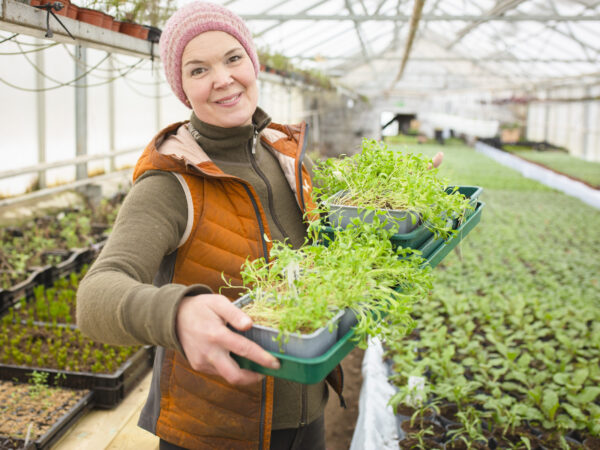
I am really enjoying reading your blog Sara, thanks for sharing your knowledge, it has helped me so much in my garden.
Your blogs inspired me to plant as an experiment some winter vegetables at the end of January near Denver, Colorado. I used a small poly tunnel but left the rest to nature. Despite single digit (F) temps and two feet of snow a month ago, the radishes, swiss chard, and spinach have sprouted!
Thank you for sharing all your great ideas!
Thank you for your kind words. Take care!?
Hello,
I'm learning so much about planting in zone 3 from watching you! I have one question: we live in Alaska, USA, and moose coming to snack upon open garden beds is a problem here. Do you have this problem, and how do you manage it without a huge fence?
Hi there!
Thank you for reaching out! 🙂 I do have problems with elk, and other animals eating the greens from time to time. I sometimes put at thin cover on the growings at night. I keep some greens in the polytunnel of course. But otherwise, the trick is to grow A LOT! So there will be enough for the family anyway. Take care! ?